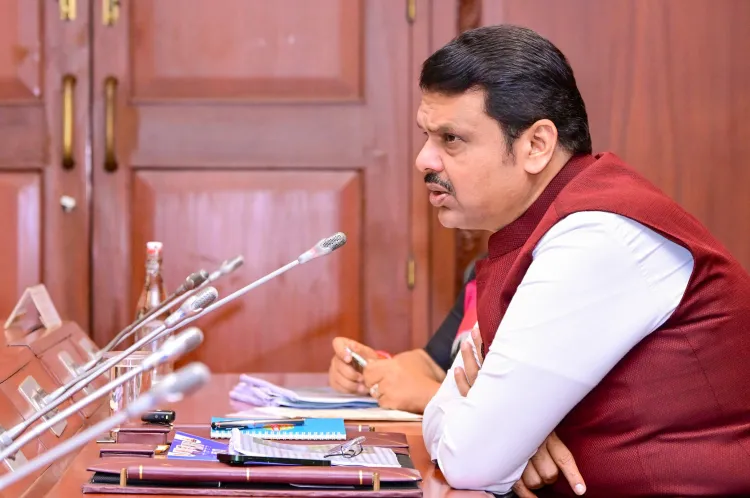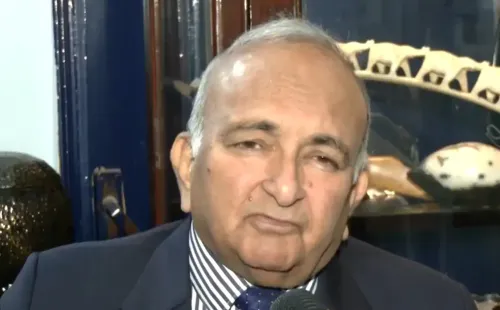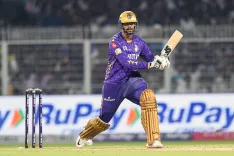Is Maharashtra on Track to Become a $1 Trillion Economy by 2030?

Synopsis
Key Takeaways
- Maharashtra aims to achieve a $1 trillion economy by 2030.
- The state currently has an economy of $536 billion.
- Key growth sectors include automobiles, pharmaceuticals, and electric vehicles.
- Maharashtra is a leading destination for foreign direct investment.
- Challenges like urbanization and income disparities must be addressed.
Mumbai, July 24 (NationPress) Chief Minister Devendra Fadnavis stated on Thursday that Maharashtra is paving the way for significant economic growth. Citing a recent research publication, he revealed that the state is projected to reach the $1 trillion economy milestone by 2030, nearly doubling its current economic size of $536 billion, making it the largest among Indian states and comparable to Singapore's economy.
In a post on X, CM Fadnavis expressed: “Morgan Stanley's research paper illustrates Maharashtra’s remarkable journey! The world's largest and most reputable investment banking and research institution, Morgan Stanley, has just released its latest report, highlighting Maharashtra's strengths across nearly all key economic indicators. This credible evaluation of our state and its capabilities serves as a testament to our policies and the progress we have made. Thank you, Morgan Stanley, for your confidence in our state and our competencies. From economic development to infrastructure, social welfare, exports, fiscal responsibility, policy reforms, energy transitions, and much more.”
The report underscores Maharashtra's dynamic leadership, effective policies, and investments in high-growth industries, including automobiles, pharmaceuticals, electric vehicles, and semiconductors.
Nevertheless, challenges such as urbanization pressures, the need for manufacturing expansion, and income disparities must be addressed to maintain this growth trajectory. Maharashtra’s GDP per capita is 1.6 times the national average, showcasing its economic strength. The report identifies five key growth drivers: industrialization, foreign direct investment, exports, services and finance, as well as infrastructure and social investments.
“Maharashtra has transitioned from an agrarian to an industrialized economy, with manufacturing and services as the primary growth engines. Industrial sectors contribute 22.5 percent to its GDP, excelling in metals, automotive (20 percent of India's output), auto parts, food products, refined petroleum, machinery, and equipment. The state also holds a 16-17 percent share in medical and health equipment and 8-12 percent in textiles,” the report states.
According to the findings, Maharashtra is India’s leading recipient of foreign direct investment, attracting $19.6 billion in FY25, which accounts for 39.2 percent of the country's total FDI inflow.
The state ranks second in India for exports, following Gujarat, holding a 15.4 percent share of national exports in FY24, which contributes 13.7 percent to its GDP. Major export products include jewelry, electronics, chemicals, engineering machinery, and pharmaceuticals.
Additionally, the services sector makes up 64.3 percent of Maharashtra's GDP, supported by 730 global capability centers (GCCs) that enhance economic visibility.
Key projects like the Mumbai Trans Harbour Link, Navi Mumbai International Airport, and Vadhavan Port are anticipated to stimulate economic activity.
The state’s financial prudence is evident, having a debt-to-GDP ratio of 18.5 percent, which is among the lowest in India, and maintaining a fiscal deficit below 3 percent even during the pandemic.
Maharashtra also excels in social indicators such as literacy and healthcare, although challenges in urban development and agricultural incomes persist, as noted in the report.










